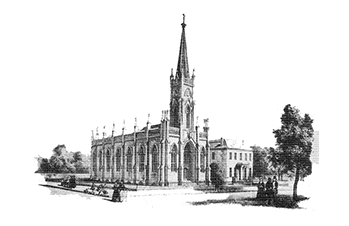William Henry Elder
Third Bishop of Natchez A Biographical Sketch
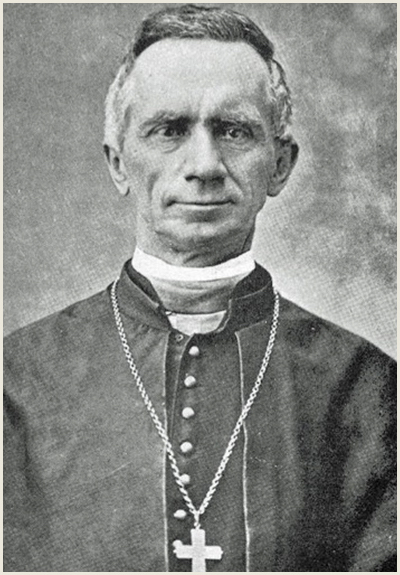
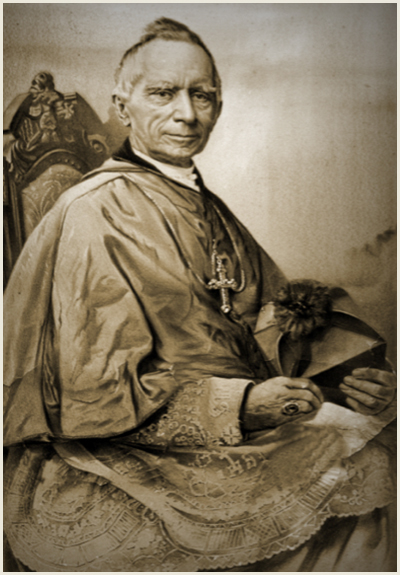
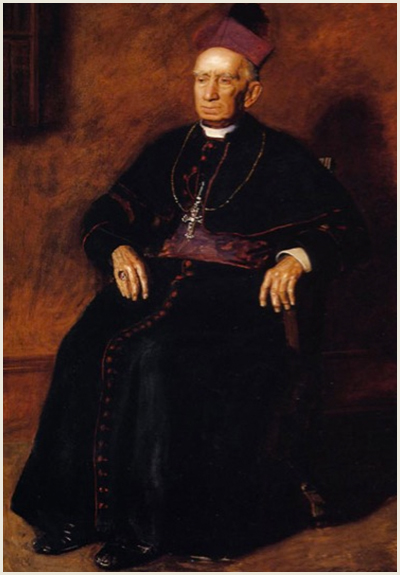
BY MARY BELLAN EIDT
“A true son of the South,” so wrote Bishop Richard Oliver Gerow about William Henry Elder, third bishop of Natchez.
Born and educated in Maryland, Bishop Elder served the diocese of Natchez from 1857-1880. He ministered to his flock and was beloved by his congregation. However, his episcopacy faced two major challenges--the completion of the cathedral and the problems of the Civil War. He worked diligently to raise funds to finish the interior of the church. Under his leadership local artisans completed plastering, flooring, woodworking, and the installation of pews and windows. On August 14, 1859, the Catholic community, led by Archbishop Blanc of New Orleans and Bishop Elder, celebrated the re-opening of the cathedral with a Pontifical High Mass.
The jubilation over the building enhancement was soon eclipsed by rumors of war. Realizing the seriousness of the conflict, the bishop frequently held church services to ask God for guidance and protection. After the Southern states seceded from the Union, he not only defended their rights but also altered the wording of the prayers for the ruling officials while he continued to pray for peace.
The welfare of the soldiers was a priority of Elder. He urged the clergy to pray for the safety of the soldiers and appealed to the parishioners to provide religious articles, clothes, and other necessities for the soldiers. Routinely, he offered Mass, administered the sacraments, and preached at the camps. He presided over special church services in thanksgiving for the victory of Bull Run and the end of the bombardment of Natchez by the Union gunboat Essex. Along with the clergy, he ministered to the Union soldiers, caring for the sick and praying for the dying.
The ultimate test of Bishop Elder’s ecclesiastical authority was interference by the Federal commander, General Tuttle, who wanted him to pray for the Union cause. Elder wrote a letter to President Lincoln, explaining that his refusal was based on the authority of the church to regulate church services. Apparently, Elder’s letter was convincing because General Tuttle was instructed not to interfere in church matters. However, Tuttle was soon replaced by Colonel Farrar who ordered all pastors to read prescribed prayers in their churches. The bishop again explained his position in a lengthy letter to the colonel. The letter was delivered to Brigadier General Brayman, the new Federal commander. Brayman was adamant and ordered Bishop Elder exiled to Vidalia, Louisiana, where he was held for 17 days. General Brayman allowed him to return to Natchez pending a decision by the War Department. Amid much rejoicing and the ringing of bells, the bishop returned to his cathedral. Later the ladies of the congregation presented him with a prie-dieu. The brass plate on the prie-dieu reads: From the Ladies of the Congregation in thanks for the Bishop’s liberation from military arrest August 12, 1864. (The prie-dieu is housed in the front parlor in the rectory.)
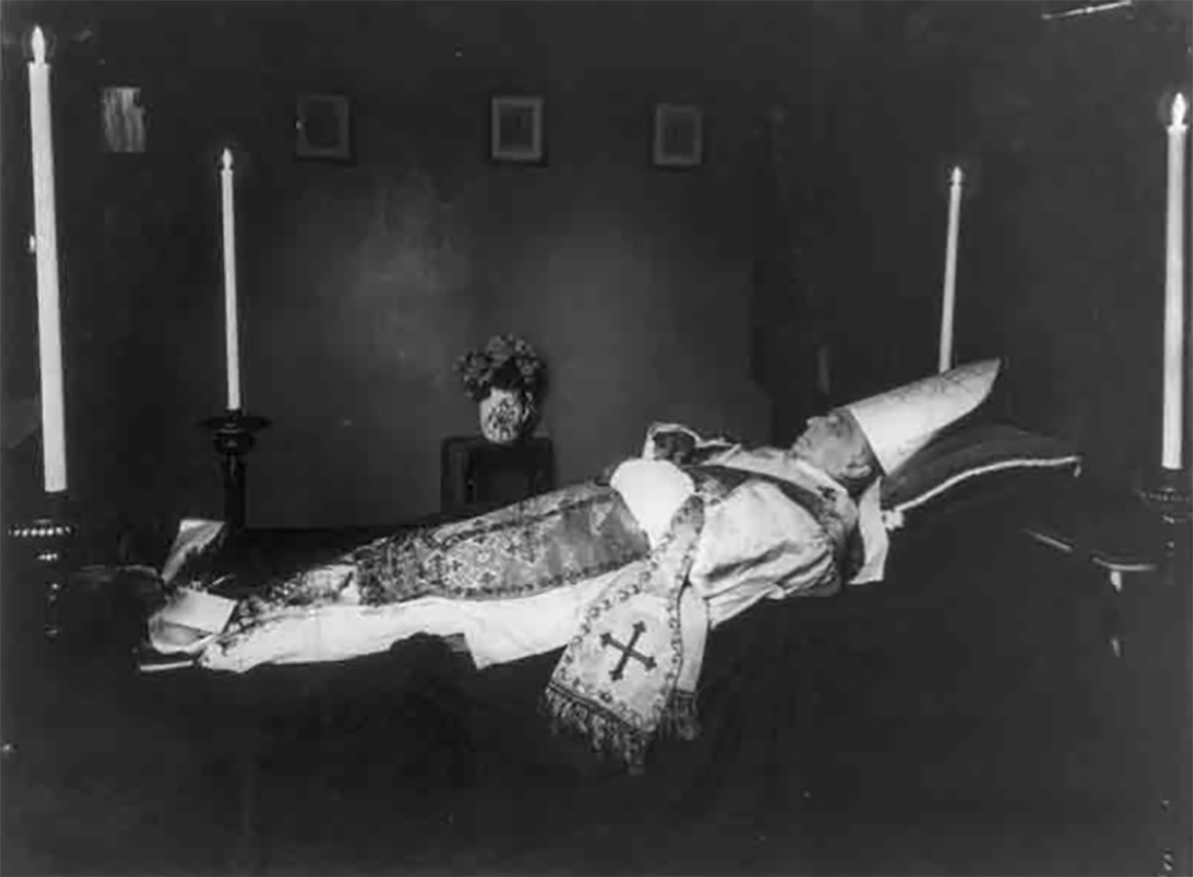
William Henry Elder Archbishop of Cincinnati, Lying dead on catafalque – Library of Congress
James Guercio presents a Natchez History Minute about William Henry Elder, the third Bishop of Natchez who was imprisoned during the Civil War for not allowing prayer for the President of the United States in the Catholic churches of his diocese. Elder was born on this day, March 22, 1819… View video
